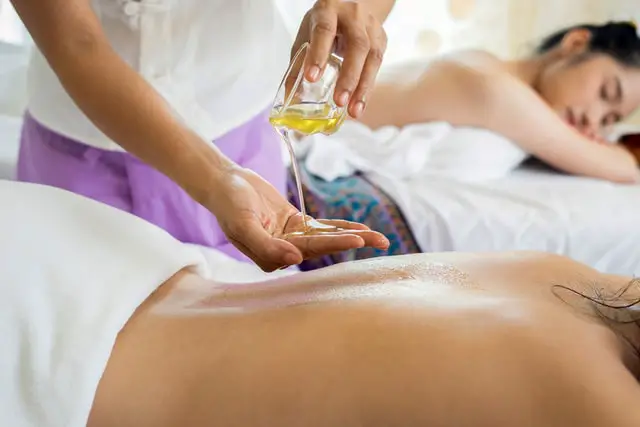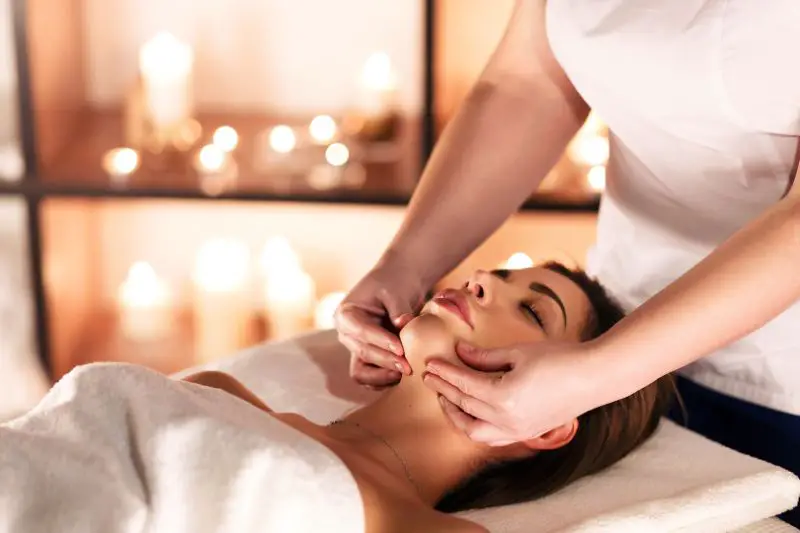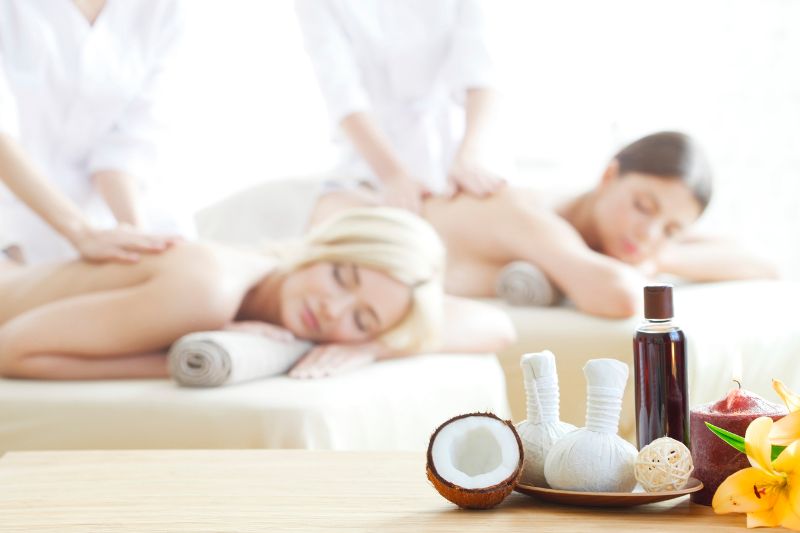
Have you ever wondered why some spas thrive while others struggle to attract clients? The secret isn’t just in offering luxurious treatments—it’s in knowing exactly who your ideal customers are and how to reach them.
The spa industry is booming, but with so many options available, customers are more selective than ever. Whether you own a high-end retreat, a wellness-focused center, or a budget-friendly day spa, understanding your target market is the key to long-term success.
In this article, we’ll dive deep into identifying your spa’s ideal audience, exploring different customer segments, and uncovering effective marketing strategies to attract and retain loyal clients. By the end, you’ll have a clear roadmap to position your spa for growth and profitability. Let’s get started!
Understanding the Spa Industry and Market Trends

The spa industry has seen remarkable growth in recent years, driven by increasing consumer demand for wellness, relaxation, and self-care. However, as competition rises, spa owners must stay ahead by understanding industry trends and market shifts. This section explores the latest developments and what they mean for your business.
The Rising Demand for Wellness and Self-Care
Consumers today are more health-conscious than ever, with wellness becoming a top priority. According to the Global Wellness Institute, the wellness economy is projected to exceed $7 trillion by 2025. This trend is directly influencing the spa industry, as more people seek services that promote relaxation, mental well-being, and holistic health.
Spas that cater to this growing wellness movement—offering services like aromatherapy, mindfulness sessions, and organic treatments—are seeing higher engagement from customers who prioritize self-care. If your spa aligns with this shift, positioning your business as a wellness destination can give you a competitive edge.
Shifting Demographics of Spa-Goers
While spas were once associated mainly with luxury-seeking clientele, today’s customers span various demographics:
- Millennials and Gen Z: These younger generations value experiences over material goods and are drawn to spas offering unique treatments, social media-worthy aesthetics, and eco-conscious practices.
- Busy Professionals: High-stress jobs create demand for quick, effective stress-relief treatments, such as express facials, deep-tissue massages, and workplace wellness programs.
- Older Adults: The aging population is increasingly interested in spas for therapeutic and pain-relief treatments, including hydrotherapy, acupuncture, and medical spa services.
Understanding these shifts helps you tailor your marketing and services to attract the right customers.
The Influence of Technology and Personalization
Technology is transforming the spa industry, with personalized treatments and digital convenience shaping customer expectations. Some key trends include:
- Online booking and mobile apps: Spas that offer seamless digital booking experiences see higher retention rates.
- AI-driven skincare analysis: Personalized skincare and treatment recommendations based on AI technology appeal to tech-savvy customers.
- Virtual consultations: Pre-appointment virtual consultations help spas connect with potential clients and build trust.
By integrating technology into your business, you can enhance customer convenience, improve personalization, and stand out from competitors.
Sustainability and Ethical Consumerism
Today’s consumers are more eco-conscious, and they expect businesses to align with their values. Sustainable practices in the spa industry are becoming a major differentiator. Key areas to focus on include:
- Using organic, cruelty-free, and locally sourced skincare products
- Reducing water and energy consumption through eco-friendly facilities
- Offering sustainable packaging and refillable product options
Spas that emphasize sustainability not only attract environmentally conscious customers but also build a strong brand reputation.
What These Trends Mean for Your Spa
Understanding these market trends allows you to:
- Identify and refine your target audience based on emerging consumer behaviors
- Adapt your services and marketing strategies to meet evolving expectations
- Stay ahead of the competition by embracing innovation and sustainability
Identifying Your Spa’s Target Market

Understanding your target market is essential for building a successful spa business. By identifying the specific customers who are most likely to visit your spa, you can tailor your services, pricing, and marketing efforts to meet their needs. This section will guide you through defining your ideal audience and positioning your spa to attract them effectively.
Defining Your Ideal Customer
To create a clear profile of your target market, start by analyzing key demographic and psychographic factors.
- Demographics: These include measurable characteristics such as:
- Age: Are your clients primarily millennials seeking trendy self-care treatments or older adults looking for therapeutic services?
- Gender: While many spas cater predominantly to women, there is a growing market for men’s grooming and wellness services.
- Income level: Are you targeting luxury seekers willing to pay a premium, or are your services designed for budget-conscious customers?
- Location: Are you attracting locals, tourists, or a mix of both?
- Psychographics: This focuses on behaviors, values, and lifestyle preferences:
- Wellness priorities: Do your customers seek stress relief, anti-aging solutions, or holistic healing?
- Spending habits: Are they willing to invest in memberships and high-end products, or do they look for deals and promotions?
- Brand loyalty: Do they prefer spa chains, boutique wellness centers, or medical spas with specialized treatments?
By gathering this data, you can create a detailed customer persona that represents your ideal spa-goer.
Understanding Customer Needs and Pain Points
Each segment of spa customers has specific needs and challenges. Identifying these will help you refine your services and marketing message.
- Busy professionals need quick, efficient treatments that fit into their schedule, such as express facials or lunchtime massages.
- Luxury seekers expect premium experiences with top-tier products, private suites, and personalized services.
- Wellness-focused clients prioritize holistic treatments like aromatherapy, meditation, and organic skincare.
- Older adults may seek pain management therapies, such as reflexology or hydrotherapy, to improve mobility and well-being.
Addressing these needs directly in your service offerings and marketing can make your spa more appealing to the right audience.
Evaluating Market Demand and Competition
To ensure your target market is viable, research local competition and customer demand.
- Conduct market research: Use surveys, social media insights, and industry reports to assess interest in your services.
- Analyze competitors: Study other spas in your area. What services do they offer? What gaps can you fill?
- Leverage customer feedback: Gather reviews and testimonials to understand what customers love about your spa—and where you can improve.
By taking a data-driven approach, you can refine your target market and position your spa to stand out in a competitive landscape.
Aligning Your Brand with Your Audience
Once you’ve identified your target market, ensure that every aspect of your brand—from your spa’s ambiance to your online presence—resonates with them.
- Brand messaging: Speak directly to your audience’s desires. If you cater to wellness enthusiasts, emphasize relaxation and self-care. If your focus is luxury, highlight exclusivity and premium experiences.
- Visual identity: Your logo, colors, and décor should align with your target customers’ preferences. A minimalist, earthy aesthetic may appeal to wellness seekers, while elegant, high-end finishes attract luxury clients.
- Marketing strategy: Choose platforms where your target audience is most active, whether it’s Instagram for millennials, LinkedIn for professionals, or community events for local clientele.
Types of Spa Clients and How to Tailor Your Services

Not all spa clients are the same, and a one-size-fits-all approach can limit your business’s growth. Understanding the diverse needs, expectations, and behaviors of different client segments allows you to customize services, refine marketing strategies, and deliver an exceptional spa experience that keeps clients returning.
In this section, we’ll break down the major types of spa clients, what they seek, and how you can tailor your offerings to meet their unique preferences.
The Wellness-Seeking Client
Who They Are
Wellness seekers prioritize physical and mental well-being over traditional beauty treatments. They often include yoga practitioners, mindfulness enthusiasts, and those who explore holistic healing therapies. Many in this group are proactive about their health and seek natural, long-term solutions rather than quick fixes.
What They Want
- Holistic spa treatments such as hydrotherapy, aromatherapy, and energy healing
- Organic, chemical-free, and eco-conscious skincare products
- Personalized wellness programs combining spa treatments with nutrition, fitness, and stress management
- Services that promote deep relaxation, detoxification, and mind-body balance
How to Attract Them
- Use eco-friendly branding with a focus on sustainability and natural ingredients
- Offer wellness retreats that integrate spa services with yoga, meditation, and life coaching
- Create customized detox packages that include lymphatic drainage massage, herbal teas, and nutritional guidance
- Establish partnerships with health professionals like nutritionists, naturopaths, and wellness coaches
The Luxury-Seeking Client
Who They Are
Luxury clients view spa visits as a high-end indulgence and expect a flawless, premium experience. They are often executives, celebrities, or affluent individuals who appreciate exclusivity, cutting-edge treatments, and top-tier customer service.
What They Want
- High-end treatments, such as diamond-infused facials, stem cell therapy, and bespoke massage experiences
- VIP membership programs with personal spa concierges and exclusive access to new treatments
- Private spa suites featuring saunas, soaking tubs, and personalized aromatherapy options
- Aesthetic environments with premium furnishings, soft lighting, and high-end skincare brands
How to Attract Them
- Use high-quality marketing materials with polished imagery and sophisticated branding
- Train staff to deliver white-glove service, including personalized consultations and impeccable attention to detail
- Create a members-only lounge or VIP area for privacy and relaxation
- Offer luxury gift packages, premium product lines, and collaborations with high-end wellness brands
The Busy Professional
Who They Are
Busy professionals have limited time but recognize the importance of stress relief and self-care. They value efficiency, convenience, and high-quality treatments that fit into their demanding schedules.
What They Want
- Express services like 30-minute facials, neck and shoulder massages, and quick skin refreshers
- Flexible booking options, including early morning, lunchtime, and late-night appointments
- Mobile or corporate spa services, such as in-office chair massages
- High-tech treatments with immediate results, such as LED light therapy or cryotherapy
How to Attract Them
- Offer online booking, automated reminders, and self-check-in options to streamline the experience
- Create a subscription model for regular stress relief treatments, allowing them to prepay and schedule ahead
- Promote services through LinkedIn, corporate wellness programs, and business networking events
- Provide efficient yet luxurious amenities, such as relaxation pods, aromatherapy-infused towels, and express relaxation zones
The Anti-Aging & Beauty-Focused Client
Who They Are
This group prioritizes skincare and beauty-enhancing treatments, often seeking long-term solutions for aging, skin texture, and overall aesthetics. They are open to both traditional spa treatments and advanced cosmetic procedures.
What They Want
- Medical-grade facials, chemical peels, microneedling, and non-invasive cosmetic enhancements
- Cutting-edge treatments using retinol, peptides, and collagen-boosting technology
- Personalized skincare assessments with custom treatment plans
- High-performance anti-aging products they can use at home to maintain results
How to Attract Them
- Hire licensed estheticians and skincare experts to provide in-depth consultations
- Offer before-and-after photos, testimonials, and case studies to demonstrate treatment effectiveness
- Create a VIP skincare membership program that provides routine facials and priority scheduling
- Partner with dermatologists and aesthetic professionals to provide a well-rounded skincare approach
The Budget-Conscious Client
Who They Are
These clients enjoy self-care but are price-sensitive. They are more likely to visit spas that offer value-driven services, promotions, and rewards programs.
What They Want
- Affordable spa services such as basic massages, facials, and body scrubs
- Discounted packages, seasonal promotions, and first-time customer specials
- Loyalty rewards programs that offer free treatments or discounts over time
- Clear, upfront pricing with no hidden fees
How to Attract Them
- Create a tiered pricing system to cater to different budget levels
- Market budget-friendly treatments through social media, referral programs, and group deals
- Offer “happy hour” spa sessions at off-peak times for discounted rates
- Provide affordable add-ons that enhance their experience without significantly increasing costs
The First-Time Spa-Goer
Who They Are
These clients may feel hesitant about visiting a spa, either due to lack of experience, uncertainty about services, or concerns about cost and expectations. They need guidance and reassurance before committing.
What They Want
- A welcoming, pressure-free environment with helpful staff
- Clear explanations of treatments, what to expect, and any aftercare instructions
- Introductory starter packages that allow them to sample multiple services
- A step-by-step walkthrough of the spa experience
How to Attract Them
- Offer “New Client Special” deals to encourage first-time visits
- Provide a simple, beginner-friendly service menu with easy-to-understand descriptions
- Train staff to educate and reassure new clients without overwhelming them
- Use video guides and customer testimonials to demystify the spa experience
The Male Spa Client
Who They Are
The male spa market is growing, with more men seeking treatments that support relaxation, grooming, and skincare. However, they often feel uncomfortable in traditionally feminine spa environments.
What They Want
- Men’s grooming services, such as beard trims, facials tailored for men’s skin, and sports massages
- A neutral, masculine-friendly spa environment
- Services focused on stress relief, pain management, and athletic recovery
- Skincare and grooming products designed specifically for men
How to Attract Them
- Offer a dedicated men’s spa menu with tailored treatments
- Use neutral colors and modern branding that appeal to male clientele
- Partner with gyms, barbershops, and fitness centers to cross-promote services
- Educate men about the benefits of spa treatments, focusing on health, performance, and stress management
Customizing Your Spa Experience for Different Clients
By recognizing the distinct needs of each client type, you can fine-tune your service offerings, marketing approach, and spa atmosphere to attract and retain a diverse clientele. Personalizing the experience ensures that every visitor—whether they are a wellness seeker, luxury client, or first-time guest—feels valued and catered to.
Effective Marketing Strategies for Your Spa

A well-crafted marketing strategy is essential for attracting the right clients and ensuring a steady stream of bookings. By tailoring your approach to different customer segments, you can maximize engagement, increase retention, and grow your spa’s reputation.
Identifying Your Target Audience
Understanding Demographics and Preferences
Before launching any marketing campaign, it’s crucial to define your ideal client base. Consider factors such as:
- Age groups: Younger clients may be drawn to trendy skincare treatments, while older clients may prioritize anti-aging and relaxation services.
- Income levels: Luxury clients expect premium experiences, while budget-conscious customers seek value-driven options.
- Lifestyle preferences: Busy professionals need efficiency, while wellness seekers prioritize holistic services.
Use surveys, client feedback, and social media analytics to gather insights into your audience’s needs. This data will guide your messaging and service offerings.
Segmenting Your Marketing Efforts
Not all clients respond to the same marketing tactics. Tailor your messaging and promotions to different groups:
- Luxury clients: High-end branding, exclusive invitations, and VIP memberships
- Wellness seekers: Content focused on self-care, mindfulness, and holistic treatments
- Busy professionals: Time-saving packages, express treatments, and corporate partnerships
- First-time spa-goers: Educational materials, beginner-friendly promotions, and reassurance-driven messaging
Building a Strong Online Presence
Optimizing Your Website for Conversions
Your website is often the first impression potential clients have of your spa. Ensure it is:
- User-friendly: Clear navigation, mobile responsiveness, and fast-loading pages
- Visually appealing: High-quality images, videos, and a calming color palette that reflects your brand identity
- Informative: Detailed descriptions of services, pricing, and FAQs to answer common client questions
- Action-driven: Easy online booking, live chat support, and call-to-action buttons to encourage appointments
Adding a blog with wellness tips, skincare advice, and treatment insights can also improve SEO and position your spa as an authority in the industry.
Leveraging Social Media
Social media platforms allow you to connect with potential clients, showcase your expertise, and promote special offers. Key strategies include:
- Instagram & Pinterest: Share before-and-after treatment photos, behind-the-scenes content, and client testimonials
- Facebook & LinkedIn: Post educational content, engage with client feedback, and promote exclusive deals
- TikTok & YouTube: Create short tutorials, skincare routines, and wellness tips to attract a broader audience
Consistency is key—post regularly and engage with followers by responding to comments and messages.
Implementing Local Marketing Strategies
Partnering with Local Businesses
Collaborating with complementary businesses can expand your reach and bring in new clients. Consider partnerships with:
- Gyms and fitness studios for post-workout recovery treatments
- Hotels and resorts for guest spa packages
- Wellness coaches, nutritionists, and chiropractors for holistic service bundles
Joint promotions, referral discounts, and cross-advertising can create mutually beneficial relationships.
Engaging with the Community
Participating in local events, charity initiatives, or wellness fairs increases brand visibility and establishes your spa as a trusted community presence. Sponsorships, free workshops, and live demonstrations can attract potential clients who may not have considered spa services before.
Utilizing Promotions and Loyalty Programs
Creating Irresistible Offers
Limited-time promotions can drive bookings and attract new clients. Effective strategies include:
- First-time visitor discounts to encourage trial visits
- Seasonal promotions tied to holidays, such as Valentine’s Day couples’ packages or winter skincare treatments
- Referral incentives that reward existing clients for bringing in friends and family
Implementing a Client Retention Program
Loyalty programs encourage repeat visits and long-term engagement. Consider offering:
- Points-based rewards for frequent visits
- Memberships with exclusive discounts and priority booking
- Birthday and anniversary perks to personalize the client experience
An automated email system can remind clients about unused benefits, upcoming promotions, and special occasions.
Harnessing the Power of Reviews and Testimonials
Encouraging Satisfied Clients to Share Their Experiences
Positive reviews build trust and credibility. Request feedback from happy clients through:
- Follow-up emails with a direct link to leave a review on Google or Yelp
- Incentives such as discounts or small upgrades for leaving feedback
- Social media shoutouts featuring real client testimonials
Addressing Negative Feedback Professionally
Not all reviews will be positive, but handling criticism with professionalism can strengthen your reputation. Respond to concerns with empathy, offer solutions, and demonstrate a commitment to continuous improvement.
Investing in Paid Advertising
Google Ads and Search Engine Marketing
Running pay-per-click (PPC) campaigns ensures that your spa appears at the top of search results when potential clients look for services in your area. Use:
- Geo-targeting to reach clients within a specific radius
- Retargeting ads to remind visitors who didn’t complete a booking
- Keyword optimization to appear in searches like “best spa near me” or “anti-aging facial treatments”
Social Media Advertising
Facebook and Instagram ads allow you to target specific demographics based on age, location, interests, and behavior. Create visually appealing ads with compelling offers and clear calls to action.
Monitoring Performance and Adjusting Strategies
Tracking Key Metrics
Regularly analyze your marketing efforts to see what’s working and where improvements are needed. Key performance indicators (KPIs) include:
- Website traffic and conversion rates
- Social media engagement and follower growth
- Email campaign open rates and click-through rates
- Client retention and repeat visit percentages
Adapting to Trends and Feedback
Stay ahead of industry trends and adjust your marketing approach based on client feedback, competitor analysis, and emerging wellness preferences. Continuous improvement ensures your spa remains relevant and competitive.
Conclusion
Successfully marketing a spa requires a strategic, client-focused approach that blends digital presence, local engagement, personalized promotions, and excellent customer service. By understanding your target audience, optimizing your online visibility, and leveraging community partnerships, you can create a strong brand that attracts and retains loyal clients.
A well-structured marketing plan not only increases bookings but also enhances customer satisfaction and brand reputation. Whether you’re appealing to luxury seekers, wellness enthusiasts, or first-time spa-goers, tailoring your messaging and services to their unique needs will set your spa apart in a competitive market.
